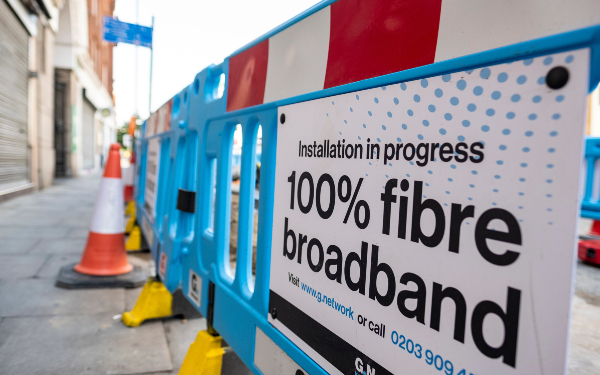
The government has launched an action plan to safeguard telecare users from the switching off of the UK’s analogue phone network.
Its replacement by a fully digital network will mean that existing services connected to the copper-based system, including many telecare devices, will need to be switched over by January 2027.
The switchover was initiated by the telecommunications industry, independently of government, with companies migrating customers to a digital service against an initial deadline of the end of 2025.
What is telecare and how is it affected by the switchover?
Telecare refers to electronic devices designed to help people with care and support needs remain independent and safe, whether they are living in a private home, in sheltered or supported housing or in residential care. They can be provided by local authorities as part of a care and support plan, purchased privately by individuals or provided by housing associations or care providers.
Examples include personal alarms, worn as a bracelet or pendant, which the person can press if they have a fall; detectors that automatically record falls; or motion sensors on a person’s bed to detect wandering.
These are connected to so-called alarm receiving services (ARCs) staffed by professionals or to family members, who will be alerted, via the device, if there is a problem.
A 2022 government plan warned that telecare was then mainly provided through analogue devices, meaning they would not work following the switchover. It also highlighted the risks of devices failing following migration in the event of a power cut, if they did not have an internal battery or were connected to an internet router that did not have a battery back-up.
Charter to protect vulnerable people
On the back of this, the major telecoms companies agreed with government a charter to protect vulnerable people. Under this, they pledged to ensure no telecare users would be migrated without the telecoms provider, customer, or telecare company confirming they had a compatible and functioning telecare solution in place.
They also agreed to work towards providing battery back-ups that gave people more than one hour’s access to emergency services in the event of a power cut.
Last year, a telecom action board (TAB) was set up, including representation from the telecoms sector, government, telecare providers and users and local authorities, to oversee the safeguarding of people using telecare during the switchover, the deadline of which was subsequently moved back to January 2027.
‘Telecare users must be protected’
“There is a risk that the process of migrating telecare users to digital landlines will disrupt their telecare services,” said minister for care Stephen Kinnock, in a statement launching the telecare action plan.

Stephen Kinnock (photo: Richard Townshend Photography)
“Telecare users must be protected during the digital phone switchover and every effort must be taken to avoid these risks.”
The telecare national action plan, which is targeted at councils, telecare providers, telecoms companies and housing providers, has four objectives:
- That no telecare user will be migrated to digital landline services without the communication provider, the user or the telecare service provider confirming that the user has a compatible and functioning telecare solution in place.
- That use of analogue telecare devices is phased out to ensure that only digital devices are being used by a deadline that the Department of Health and Social Care (DHSC) will set following talks with stakeholders.
- That telecare users, their support networks and their service providers should understand what actions they need to take to ensure a safe migration to digital phone lines.
- That stakeholders identified within the plan collaborate to safeguard telecare users through the digital phone switchover.
Councils sharing data with telecoms sector
The DHSC and Department for Science, Innovation and Technology (DSIT), which are jointly responsible for the action plan, said a key priority under objective 1 was that councils and telecare providers shared data about service users with telecoms providers, so they could put additional safeguards in place for them.
The Local Government Association (LGA) and London Office of Technology and Innovation (LOTI) have drawn up a data sharing template to streamline the process of councils and telecoms providers reaching agreements.
This stated that the lawful basis for councils sharing the data was “substantial public interest”, based on it being in the best interests of people with care and support needs using social care for them to do so.
The DSIT and DHSC said they would engage with local authorities who had not signed data sharing agreements to understand the barriers to doing so.
Continued use of analogue devices
The departments said objective 2 required action to stop the manufacture, sales and purchase of new analogue telecare devices. Ministers wrote to telecare suppliers in September 2024, requesting that they do not sell analogue-only devices, while the departments are also working with consumer groups to highlight the risk of people purchasing such equipment.
However, they added that, while their long-term ambitions were for telecare users to have fully digital devices that were resilient to power cuts, interim solutions that enabled the use of analogue devices on digital phone lines were permissible in the medium-term, so long as there was adequate risk assessment, testing and ongoing monitoring.
The action plan said testing had shown that the reliability of such devices was dependent on the model, the telephone line type and provider and equipment used by the alarm receiving centre, meaning telecare providers needed to “ensure the reliability of the specific combination of equipment and services they use”.
Raising awareness among telecare users
It added that a national awareness raising campaign on the switchover, to be launched by the telecoms industry in early 2025, would be “tailored to the unique characteristics of telecare users and their support networks”.
The action plan also highlighted the risks of criminals exploiting the switchover to target people with scams, by tricking them into sharing personal information.
It pointed to LGA guidance on the issue, which advised councils to ensure that frontline staff were aware of the switchover and reported potential scams to trading standards while also raising them as safeguarding concerns.
The LGA guidance also urged co-ordination between children’s and adults’ social services teams and trading standards to identify which residents may be vulnerable to scams and to proactively safeguard them, for example, through setting up call blocking services.





 Bournemouth, Christchurch and Poole
Bournemouth, Christchurch and Poole  Hampshire County Council
Hampshire County Council  Oxfordshire County Council
Oxfordshire County Council  South Gloucestershire Council
South Gloucestershire Council  Wokingham Borough Council
Wokingham Borough Council  Webinar: building a practice framework with the influence of practitioner voice
Webinar: building a practice framework with the influence of practitioner voice  ‘They don’t have to retell their story’: building long-lasting relationships with children and young people
‘They don’t have to retell their story’: building long-lasting relationships with children and young people  Podcast: returning to social work after becoming a first-time parent
Podcast: returning to social work after becoming a first-time parent  How managers are inspiring social workers to progress in their careers
How managers are inspiring social workers to progress in their careers  Workforce Insights – showcasing a selection of the sector’s top recruiters
Workforce Insights – showcasing a selection of the sector’s top recruiters 

 Facebook
Facebook X
X LinkedIn
LinkedIn Instagram
Instagram
Comments are closed.